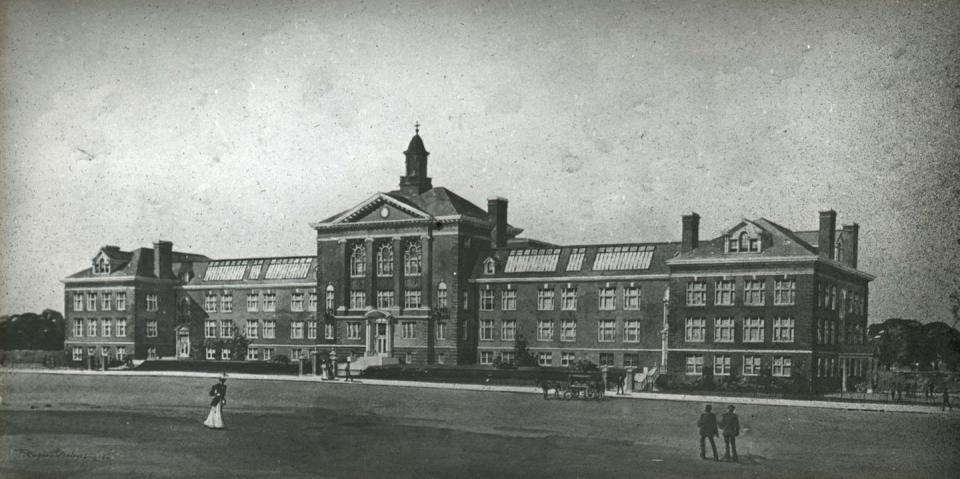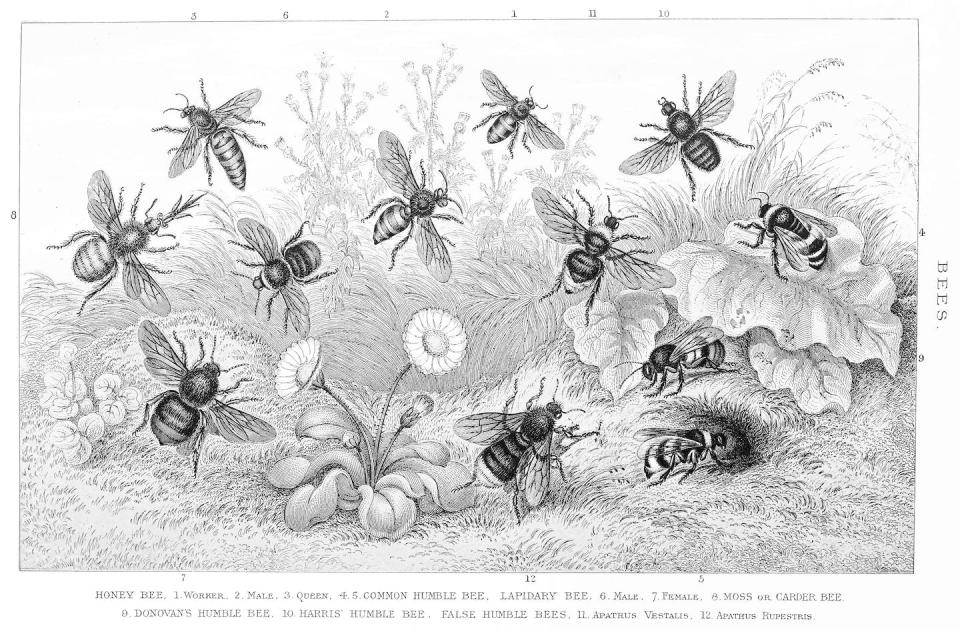On a brisk autumn morning in 1908, an elegantly dressed African American man paced among the oaks, magnolias and silver maples in O’Fallen Park in St. Louis, Missouri. After placing a dozen dishes filled with strawberry jam on top of several picnic tables, biologist Charles Henry Turner retreated to a nearby bench, notebook and pencil at the ready.
After a mid-morning break for tea and toast (along with strawberry jam, of course), Turner returned to his outdoor experiment. At noon and again at dusk, he placed dishes filled with jam on the tables of the field. As he discovered, honey bees (Apis mellifera) were reliable breakfast, lunch and dinner visitors to the sugary buffet. After a few days, Turner stopped offering jams at noon and sunset, and presented the deals only at dawn. At first, the bees continued to appear three times in total. Soon, however, they changed their arrival patterns, visiting the picnic tables only in the morning.
This simple but elegant experiment led Turner to the conclusion that bees can sense time and will rapidly develop new feeding habits in response to changing conditions. These results were among the first of Turner’s groundbreaking discoveries about insect behavior.
During his distinguished 33-year career, Turner authored 71 papers and was the first African American to have his research published in the prestigious journal Science. Although his name is hardly known today, Charles Henry Turner was a pioneer in the study of bees and should be considered among the great entomologists of the 19th and 20th centuries. While researching my book on human interactions with insects in world history, I became aware of Turner’s pioneering work on insect cognition, which constituted much of his pioneering research on animal behavior.
Humble beginnings
Turner was born in Cincinnati in 1867, just two years after the Civil War ended. The son of a former enslaved church custodian and nurse, he grew up under the spell of Jim Crow – a series of formal laws and informal practices that relegated African Americans to second-class status.
The social environment of Turner’s childhood included segregation in schools and housing, frequent lynchings and the denial of basic democratic rights to the city’s non-white population. Despite enormous obstacles to his educational goals and professional aspirations, Turner’s tenacious spirit saw him through.
As a young boy, he developed an abiding interest in small creatures, capturing and cataloging thousands of ants, beetles and butterflies. An ability in science was one of Turner’s many talents. At Gaines High School, he led his all-Black class, cementing his place as valedictorian.
Turner went on to earn a Bachelor of Science degree from the University of Cincinnati, and became the first African American to receive a doctorate in zoology from the University of Chicago. Turner’s groundbreaking doctoral dissertation, “The Homing of Ants: An Experimental Study of Ant Behavior,” was later published in the September 1907 issue of the Journal of Comparative Neurology and Psychology.
Despite his prowess, Turner was unable to find long-term employment in higher education. The University of Chicago refused to offer him a job, and Booker T. Washington had too much money to hire him at the all-black Tuskegee Normal and Industrial Institute in Alabama.

After a brief stint at the University of Cincinnati and a temporary position at Clark College (now Clark Atlanta University), Turner spent the rest of his career teaching at Sumner High School in St. Louis. As of 1908, his salary was nearly US$1,080 a year – about $34,300 in today’s dollars. At Sumner—without access to a fully equipped laboratory, research library or graduate students—Turner made remarkable discoveries about insect behavior.
Intent to examine the insects
Among Turner’s most impressive findings were wasps, bees, sawflies and ants – members of the Community Hymenoptera order – they were not just primitive automatons, as so many of their contemporaries thought. Instead, they are organisms with the ability to remember, learn and feel.


During the early 1900s, biologists knew that flowers attracted bees to pollinators by producing a certain smell. However, these researchers did not know about the visual aspects of these things, when bees were too far from the flowers to smell them.
To investigate, Turner hammered rows of wooden dowels into the O’Fallen Park lawn. On top of each rod, he stuck a red disc dipped in honey. Soon, bees began to travel from far away to their makeshift “flowers”.
Turner then added a series of “control” rods with blue discs that had no honey on them. The bees paid little attention to the new “flowers”, indicating that visual cues provided guidance, when the bees were too far away to smell their targets. Although the ability of honey bees to detect red is still controversial, scientists have determined that Turner’s bees were probably responding to what are known as achromatic stimuli, which enabled them to distinguish among different colors and shades.
Enduring legacies of an underappreciated pioneer
Turner’s impressive array of results from three decades of experiments established his reputation as an authority on the behavioral patterns of bees, cockroaches, spiders and ants.
As a scientific researcher without a university job, he had an odd niche. In large part, his situation was the result of systemic racism. It was also a result of his commitment to training young Black students in science.
Along with his scholarly publications, Turner wrote extensively on African American education. In his 1902 essay “Will Education of the Negro Solve the Race Problem?” Turner argued that trade schools were not the way to Black empowerment. Instead, he called for widespread public education of African Americans in all subjects: “if we put aside our prejudices and achieve the highest education for whites and Blacks, there will be no Negro problem in in a few years.”
Turner was only 56 when he died of acute myocarditis, an infectious heart inflammation. He was survived by two children with his second wife, Lillian Porter.
Turner’s scientific work will live on. His articles continue to be widely cited, and most of his conclusions have since been verified by entomologists.
Despite the enormous challenges he faced during his career, Charles Henry Turner was one of the first scientists to reveal the secret life of bees, the winged pollinators that ensure the well-being of human food systems and the survival of the Earth’s biosphere.
This article is republished from The Conversation, a non-profit, independent news organization that brings you reliable facts and analysis to help you make sense of our complex world. It was written by: Edward D. Melillo, Amherst College
Read more:
Edward D. Melillo does not work for, consult with, own shares in, or receive funding from any company or organization that would benefit from this article this article, and did not disclose any relevant connections beyond their academic appointment.